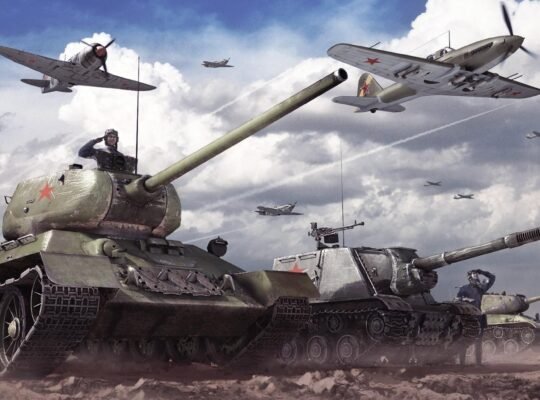Introduction
Tesla has quietly launched a test of its long-promised self-sustaining robotaxi service in Austin, Texas. The pilot started out on June 22, 2025, when a small fleet of self-driving Tesla Model Y automobiles began picking up paying passengers. This marks the primary time Tesla Motors, without drivers, has carried riders for a charge. CEO Elon Musk hailed the occasion as the “result of a decade of difficult work” at the company’s autonomous driving software program and AI hardware.
Key facts about the Austin robotaxi test:
Launch Date:
June 22, 2025
Vehicles:
About 10 Tesla Model Y SUVs serving as robotaxis
Rider Access:
Invite-simplest (Tesla enthusiasts and social media influencers)
Safety:
Tesla worker rides in the front passenger seat for safety
Fare:
Flat $ $4.20 per experience
Hours:
6 AM to midnight (climate and time restrictions follow)
Area:
Service operates in a geofenced phase of Austin
Tech:
Tesla’s Full Self-Driving software uses Tesla Vision (no radar or lidar)
Tesla’s move represents a breakthrough in independent mobility and springs after years of guarantees. Analysts have mentioned that a huge portion of Tesla’s market fee is tied to its robotaxi ambitions. The new check may additionally provide a glimpse into how autonomous transportation could evolve within the coming years.
How the Austin Robotaxi Service Works
During this pilot, Tesla Model Y automobiles operate without drivers but with a trained Tesla body of workers member sitting in the front passenger seat. The driver’s seat remains unoccupied. Tesla’s custom app shall we users to hail a ride, much like with conventional trip-sharing platforms.
The robotaxis operate inside a strictly defined geofenced area and observe a flat fare of $four.20 in step with ride, no matter the distance. Tesla has chosen to hold the rollout confined to a smaller institution of pre-approved riders for now.
Cars are programmed to avoid tough situations,, includinghigh-traffics zones, intense climate, or complex intersections. Trips are restricted to specific neighborhoods within Austin, and the motors are mechanically pulled off the road for the duration of inclement weather or at night time after nighttime.
Despite some early ride movies showing short system faults (including hesitation or atypical braking), maximum trial runs have finished smoothly.
Tesla’s Full Self-Driving Technology
At the coronary heart of this initiative is Tesla’s proprietary Full Self-Driving (FSD) system, supported through Tesla Vision, a camera-based setup. Unlike competitors like Waymo or Cruise, Tesla does not use lidar or radar sensors. Instead, 8 cameras across the automobile provide real-time imagery, which Tesla’s AI tactics to navigate roads, limitations, and site visitors.
The vehicles are powered by Tesla’s custom-designed neural network chip, optimized for processing digicam photos quickly. This AI is skilled in billions of miles of real-world facts accumulated from Tesla automobiles globally.
Tesla believes this information-first approach will ultimately outpace sensor-heavy systems by providing a better understanding of actual global driving behavior.
Safety Measures and Regulations
Tesla has taken a cautious, safety-first technique for this release. A skilled group of workers, known as a safety reveal, sits in the front passenger seat throughout all journeys. They can prevent the vehicle from whatever is going wrong.
In addition to onboard human supervision, remote monitoring is also in place. Each robotaxi is related to a Tesla-manipulated middle in which operators can step in if needed.
Local Texas legislation has also played a role. A new country law, powerful September 2025, requires groups offering autonomous ride services to fulfill requirements, along with:
The vehicle should record sensor records
Companies have to hold incident logs
Systems ought to have clean override alternatives
AVs have to halt appropriately in the event of hardware/software program failure
These recommendations mirror a stability between innovation and public safety—something Tesla ought to uphold if it wants to hold favorable situations for destiny enlargement.
How Tesla’s Robotaxis Compare with Competitors
Tesla is entering a marketplace that already includes big gamers like:
Waymo (Alphabet/Google)
Operating in Phoenix and San Francisco
Cruise (GM)
Paused offerings after a few high-profile incidents
Zoox (Amazon)
Still in early testing phases.
However, Tesla’s version is specific in numerous approaches:
Uses existing customer automobiles (Model Y)
Relies completely on digital camera-based perception
Can replace vehicles over the air with the use of software program patches
Plans to sooner or later permit Tesla proprietors to rent out their cars as part of the network
Analysts endorse that Tesla can have an aggressive edge due to the sheer number of its motors on the street and its capacity to learn from huge real-world data.
Impact of Robotaxi Service Rollout
Tesla’s long-term vision consists of tens of millions of self-driving cars working as robotaxis around the world. This version should:
Lower transportation expenses
Reduce visitors’ congestion and parking calls for
Provide a new source of passive income for Tesla proprietors
Reduce emissions via the large use of EVs in shared fleets
However, professionals are also warning that technical hurdles, public consideration, and regulatory oversight remain huge limitations. Every new ride in Austin contributes to Tesla’s growing financial institution of riding records, bringing the company one step closer to its bold vision.
Regulatory Landscape: What Tesla Needs to Navigate
As promising as Tesla’s robotaxi rollout may be, regulatory approval remains one of the largest hurdles for complete-scale deployment. In the USA, the regulatory environment is fragmented, with federal, state, and even municipal bodies all involved in placing self-driving automobile (AV) policies.
At the federal stage, the National Highway Traffic Safety Administration (NHTSA) oversees car safety standards. While NHTSA does not presently have a comprehensive framework specific to AVs, it actively displays video display units self-sustaining testing, and has issued guidance documents. Companies like Tesla should show that their self-driving systems observe primary roadworthiness and may fail competently in edge-case situations.
On the national level, Texas has positioned itself as a friendly jurisdiction for AV testing. The nation surpassed regulation permitting driverless automobiles on public roads so long as they observe visitors’ legal guidelines and bring liability insurance. A new national law, effective from September 2025, in addition outlines requirements for robotaxi service:
The vehicle must report the sensor fact.s
Companies should keep incident logs
Systems should have clean override options
AVs must halt effectively in the event of hardware/software failure.e
These suggestions replicate a stability between innovation and public protection—something Tesla has to uphold if it desires to keep favorable conditions for destiny expansion.
Elon Musk’s Vision vs. the Reality of Autonomy
Elon Musk has long been the most vocal advise for Tesla’s independent objectives. As some distance back as 2016, he claimed that Tesla Motors might be capable of coast-to-coast across the U.S. without intervention “inside a year.” Later, in 2019, he projected that Tesla might launch 1 million robotaxis by 2020. The ones’ timelines no longer materialize.
Despite delays, Tesla has made large strides. The Austin trial represents the first time Tesla has moved past supervised driving and into actual, international, paid experience eventualities. However, analysts warn that public street testing is no longer identical to full autonomy, and that doing away with the safety driver would require a long way greater regulatory scrutiny and client trust than actually launching a beta product.
These mismatches between ambitious projections and technical truth have led many in the enterprise to undertake a greater conservative tone when discussing AV timelines. Tesla keeps pushing the envelope, but it needs to deliver proof now, not simply promises.
The Role of Artificial Intelligence and Neural Networks
Tesla’s robotaxi application stands aside due to its deep integration with AI, especially neural networks trained on sizeable datasets. The Full Self-Driving (FSD) gadget mimics how human beings drive by way of learning patterns from billions of miles logged by means of Tesla drivers worldwide. Each journey taken via a Tesla vehicle will become a fact point for the crucial getting to know model, enabling chronic development.
This approach relies closely on simulation environments, shadow mode studying, and statistics labeling. In truth, Tesla’s Dojo supercomputer, designed in particular for training AI models, plays an important role in processing this information at scale. Unlike traditional car structures that rely on regulations-based programming, Tesla’s gadget is probabilistic, meaning it predicts the most probable using conduct based on context and learned behavior.
For instance, rather than being “told” to prevent at a pink mild, Tesla’s FSD learns by means of staring at how thousands and thousands of drivers technique lighting in exceptional conditions—daytime, rain, glare, or maybe in part obscured symptoms.
Yet this AI-first method has its critics. Some argue that till neural nets can fully recognize facet instances, along with production detours, ambiguous visvisitorenarios, or ethical dilemmas (e.g., choosing among two potential coincidence consequences), complete autonomy may remain simply out of attain.
Societal and Economic Implications
The rollout of self-sufficient taxis like Tesla’s robotaxi application could have some distance-accomplishing societal effects. Some of the most discussed consist of:
1. Labor Disruption
Ride-sharing drivers, taxi operators, and truckers face capability task displacement if autonomous transport turns into great. While new activity categories (like AV fleet monitors or faraway vehicle help professionals) may emerge, hundreds of thousands of traditional jobs can be threatened, mainly in growing countries where driving is a prime employment sector.
2. Urban Design and Infrastructure
If robotaxis advantage mass adoption, cities may want to reallocate parking spaces, site visitors signals, and street signs to better shape self, self-sufficient cars. Some urban planners envision “AV-most effective lanes” or centralized charging hubs where fleets should recharge and self-hold without human oversight.
3. Accessibility
One of the biggest benefits of AVs is for people with constrained mobility, such as the elderly and people with disabilities. With safe, less costly, and on-demand shipping, robotaxi service may want to considerably improve independence and access to essential services for hundreds of thousands.
4. Environmental Benefits
Tesla’s robotaxis are fully electric-powered, decreasing the carbon footprint of day by day travel. If one robotaxi replaces a couple of personal motors or quick-haul rides, emissions ought to drop extensively, particularly if the vehicles are powered by renewable energy sources.
Public and Community Response
Initial reactions from the general public were combined. Enthusiastic Tesla enthusiasts have praised the convenience, smoothness, and affordability of the service. Many published trip critiques and shared pictures of their experiences on social media.
However, skepticism persists—especially from those involved approximately:
Privacy (as all rides are recorded and monitored)
Liability in case of accidents
Trust in machine decision-making
Reliability at some stage in emergencies or unusual situations
Moreover, a few community contributors in Austin raised issues approximately the take a look at sector’s loss of transparency, claiming they weren’t consulted before the release. Others puzzled the understanding of using public roads for trying out incomplete generation. These voices advocate that Tesla should win over no longer simply regulators, but the public at large to make robotaxi service a sustainable commercial enterprise.
The Bigger Picture: Tesla’s Endgame
Tesla isn’t always simply looking to compete with Uber or Lyft—it aims to update the very idea of automobile possession for lots of people. If the robotaxi service fleet becomes inexpensive and great, people might opt for subscription-based total shipping services in place of owning and maintaining a private car.
This transformation could:
Shift the car industry from a product model (car sales) to a provider version (mobility-as-a-service)
Increase Tesla’s revenue in keeping with vehicle appreciation, considering robotaxi service may want to generate profits continuously.
Allow car owners to earn passive income through letting their automobile be part of the Tesla Network once they aren’t the use of it.
However, achieving this imaginative and prescient depends on fixing a number of the toughest challenges in era and law, many of which don’t yet have clear solutions.
Frequently Asked Questions (FAQs)
Q: What is Tesla’s robotaxi service?
A: It’s an independent journey-hailing device where Tesla automobiles transport passengers without a human driver. Currently, in trying out in Austin, the motors still include a protection reveal.
Q: How do I request an experience?
A: Only invited individuals can request rides via the Tesla app in the course of the pilot phase.
Q: Is the carrier open to the public?
A: Not but. Tesla is rolling out a closed beta in Austin with a small organization of users.
Q: What does each journey cost?
A: Flat fare of $4.20 is consistent with the trip, irrespective of distance.
Q: Are there safety measures in the region?
A: Yes. Each automobile has a Tesla employee on board, real-time monitoring, and geofencing limits to reduce risks.
Q: What makes Tesla’s tech one-of-a-kind?
A: Tesla makes use of a digital camera-simplest notion (Tesla Vision) and does not use a lidar or radar. Its automobiles learn from huge riding datasets accumulated the world over.
Q: Will robotaxis update Uber and Lyft?
A: Eventually, if the tech proves secure and price-powerful, autonomous ride-hailing could reduce demand for human-driven offerings.
Q: Can Tesla owners list their very own vehicles on the network?
A: Tesla has introduced destiny plans to let proprietors offer their FSD-equipped vehicles as robotaxis to generate earnings.
Q: When will robotaxis be completely driverless?
A: There’s no set date. Tesla hopes to cast off safety video display units “within a few months,” however, regulators and safety effects will in the end decide.
Disclaimer
Created with the Synergy of AI innovation and through research, this article is intended to offer clear, accurate, and actionable insights. Each point has been double-checked to ensure it adds genuine value to your knowledge base. Our mission is to guide you with reliable, easy-to-understand information.





